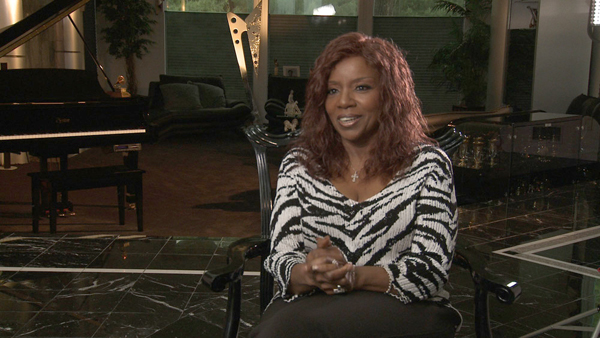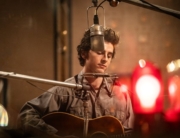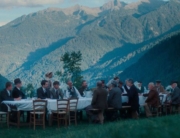Were such hits as “Boogie Wonderland,” “Boogie Fever,” or “Boogie Oogie Oogie” songs of political protest? In his amicable and gossipy overview of 1970’s dance music, director Jamie Kastner poses that question to powerhouse singer Martha Walsh, forever known as one half of the Weather Girls. She hesitates, reflects, and then politely and bemusedly answers with a firm “No.” Kool and the Gang’s Robert Bell laughs at the suggestion that “Ladies Night” offers some sort of manifesto, and even Kastner doesn’t completely take his argument too studiously. The film is more cocktail chatter than a dissertation.
He makes a case, though, that disco celebrated a new type freedom for certain demographics. He ties its roots to the black power movement, women’s liberation, and the explosion of gay visibility post-Stonewall in the early 1970s. Interspersed as visual transitions, Kastner stages the exploits of a polyester version of the Mod Squad—a hip black dude, a beautiful long-haired blonde, and an out-and-proud Pete. All dressed in silver lamé, these masterminds gather around a mirror ball, plotting disco’s takeover of the music industry. (Tongue in cheek, narrator Peter Keleghan sends up anchorman Bill Curtis at his most earnest.)
Nimbly mixing the academic with the raucous, the film temporarily goes wonderfully wonky with historian/author Alice Echols (Hot Stuff: Disco and the Remaking of American Culture). She deconstructs Donna Summer’s “Love to Love You Baby” as “the musical expression of the feminist critique of three-minute sex.”
The rise of gay clubs (especially the ambisexual Studio 54), Casablanca Records, Saturday Night Fever, the drugs, they are all here. What was happening musically in Europe is briefly mentioned, but inevitably all dance floors lead to Giorgio Moroder and the audio Viagra of “Love You to Love You Baby.” (His other—here unmentioned—collaboration with Summer, “I Feel Love,” was more of a landmark record, laying down the foundation for all types of electronica.) The documentary proceeds to give a sufficient overview of the music’s commercialization and the homophobic backlash. Much will be familiar, though this is the first time I’ve heard that the original discotheques came about in France under the Nazi Occupation.
Disco was so ubiquitous on top 40 radio that it had nowhere else to go but down (apparently like everyone in Studio 54’s dark balcony). By the time Barbara Streisand, Ethel Merman, and even Rod Stewart sang to a 4/4 bass line, the music had become mainstream and formulaic, and so after the fallout came obscurity. Among the disco survivors interviewed are one-hit wonders Maxine Nightingale and Thelma Houston, but Kastner unfairly labels singer Evelyn “Champagne” King in this category. Her biggest hit was “Shame,” still playing on an oldies station near you, but she went on to thrive on the R & B charts in the early ’80s. This slight inadvertently and ironically reflects the pre-Hip Hop gap between black pop music and the top 40, which is criticized by more than one frank talking head.
Nightingale also offers a summation of the end of an era: the ’80s was a “desert for disco.” But its fade was only temporary. It eventually came back with a new look and set to a different drum machine. Though it might have been called New Wave or the New Romantics, dance music became that decade’s pop music, thanks in large part to the second British Invasion: ABC, the Eurythmics, New Order, and too many to mention. And then there was the club kid-turned-record label owner Madonna, who blended the sound of the gay discos with an R & B influence. (Remember before she was on heavy rotation on MTV, when no one outside of Danceteria knew she was white?) She best embodies Kaster’s hypothesis—her early music had a little bit of soul, was unapologetically sexual, and always popular at gay clubs.







Leave A Comment